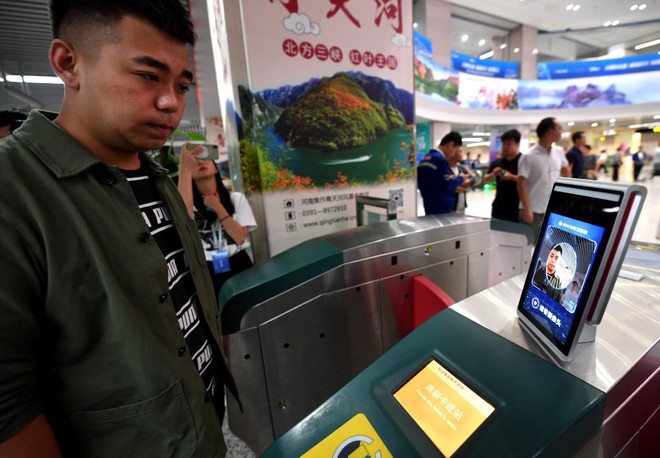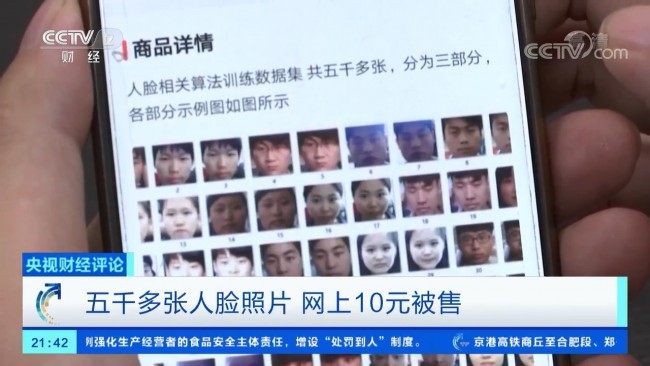Why do palms have more security than fingerprints or faces?
- Tram Ho
Biometrics are increasingly widely used for mobile recognition and payment, but most systems today face restrictions and privacy concerns. You may be worried that your face data will be kept by many technology companies, or reluctant to have to press your finger on a dirty scanner at the immigration gate.
Hand-free authentication is a technology that can solve these problems. Palm identification systems work by identifying veins, lines and ridges on the surface of the palm, through the use of cameras and infrared, without the need for contact.
” Compared to faces, palms are not sensitive private parts” – Xu Liang, an expert on palm recognition, is working at “Institute of Artificial Intelligence and Robots for the Social Society. Shenzhen “of Hongkong University, said. ” When given an image of the palm of the hand, no one can say it belongs to anyone. In daily life, the palm of the hand shrinks, so if not actively cooperating, it is difficult for the camera to hide. can steal your palm information “.

Facial recognition is very popular in China, but recently the technology has encountered privacy concerns
Liang is a research assistant for Professor David Zhang, founding director of the Biometric Research Center at Hong Kong Polytechnic University. Zhang has also been working on palm identification for years, and has published many works related to the field since 2003.
Another security advantage of palm identification is that it is difficult to steal information when the target is dead. Liang said that the vein network under the palm of the hand can only be captured under infrared light when the subject is alive, so this is essentially a system that already has anti-tampering capabilities.
A number of startups in China have begun to bring this technology to the market, though not yet implemented on a large scale.
DeepBlue Technology, an AI startup founded five years ago, now owns many palm identification products on door lock systems and vending machines that support payment by palm recognition. Melux, another startup, has a palm-identification product called AirWave, which the company says has been implemented in several office areas in Guangzhou.
American technology companies are also studying palm identification.
In December, the Recode page reported that Amazon presented a patent for a non-touch scanning system that can identify people by the palm. Amazon’s patent application says the system will take photos of surface features such as wrinkles and deeper features such as veins. In September, it was reported that the company was planning a manual payment system for Whole Foods.
Apple also has an authentication patent with its own palm, which was registered in January last year and was published by the US patent office in September.

Apple’s patent for a “fingerprint biometric sensor class” suggests it can be used on devices like phones and watches.
Many technologies are patented but then never appear in real life. But not only addressed security concerns, Liang said that palm recognition has a range of advantages over face and fingerprint recognition.
According to him, fingerprint recognition cannot be used when the finger is wet, and not available to certain people, such as workers at construction sites (their fingerprints may be worn away because of quality daily work). And the dirty contact surface after being touched too many times over a long period of time can also prevent the sensor from forming a fingerprint.
Facial recognition does not require contact, but it has hidden security risks because face images can be easily stolen, and many people respond to facial recognition because of problems with face recognition. Privacy goes along with it. In the context that China is promoting the implementation of facial recognition, face data theft is also raging in this country. In December, CCTV reported that images of more than 5,000 faces were sold online for a cheap price of just under $ 2.

In China, with $ 1.42 in hand, you can buy 5,000 faces
But even though palm recognition technology has emerged, it’s probably still not ready for widespread use.
For example, last year’s LG G8 ThinQ smartphone had a “Hand ID” feature. It uses a ToF sensor to detect depth and an infrared transmitter to map and determine the vein network under the user’s palm.
In theory, users only need to hold their hands above the phone when it is placed on the table to unlock the screen. In reality, however, reviewers say that Hand ID is rather slow and annoying to use, because it is difficult to place your hand in the position the sensor requires.

Hand ID on the LG G8 ThinQ “uses a unique circulatory system and your hand model to easily unlock the screen by quickly scanning the palm of the hand” – at least that’s in theory.
Another problem, according to Liang, is that palm identification is more complex and has higher production costs.
” Its requirements for device development are a bit higher than for fingerprint and face identification systems,” Liang said. ” I think this is why palm determination is still not common.”
He said the reason is that the palms have more complex details than the face, and the recognition area is also wider than the fingers. Images also need to be shot from a specific distance, with good lighting conditions. This requires customized rendering modules and close cooperation between device manufacturers and camera module manufacturers.
Another reason it is not so popular is that there is currently no large-scale palm dataset, Liang said.
” To handle a variety of palm shapes and positions, a large-scale palm database is needed,” he said. ” In this age, all intelligent systems are driven by big data.”
Liang also said that Chinese citizens must register their faces and fingerprints with the police, and they are familiar with the fingerprint and facial recognition systems at border gates. Palm recognition systems do not have strong government support, so there is no investment needed for palm recognition technology to spread.
But there is still a future for palm identification.
” I think the situation will become more positive because more and more companies and organizations pay attention to palm recognition,” Liang said.
Reference: AbacusNews
Source : Genk
